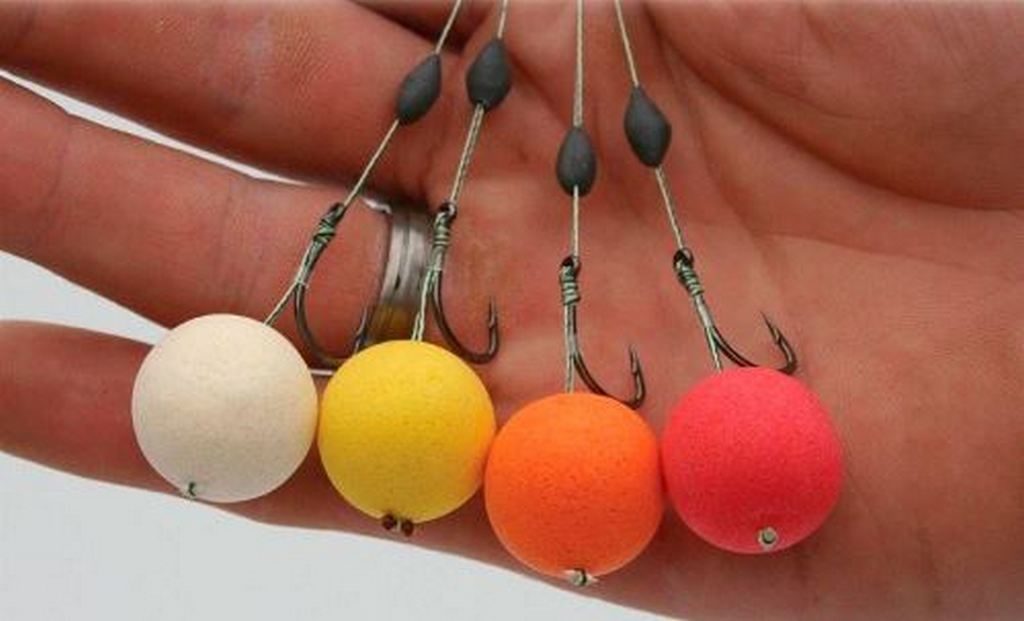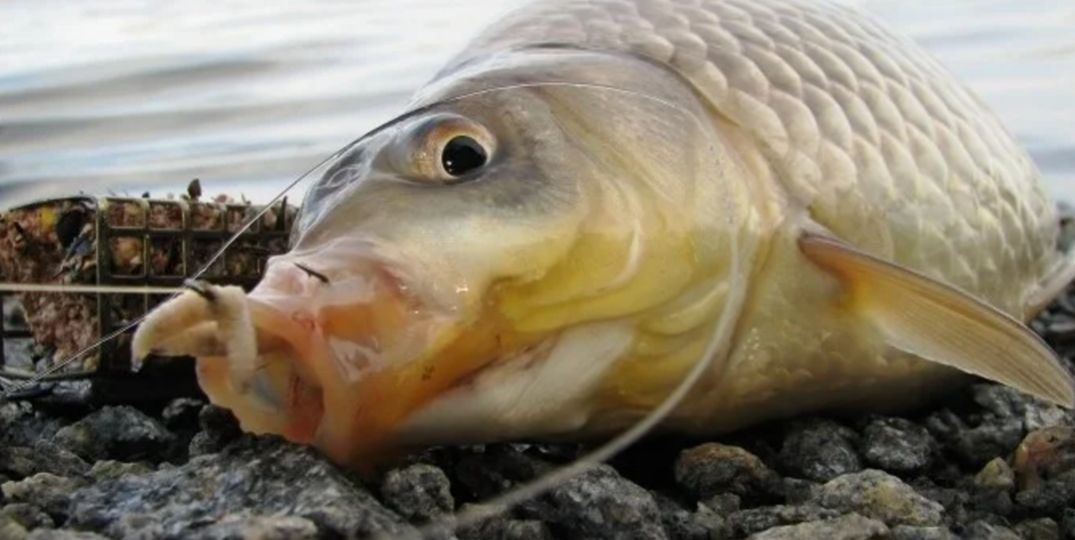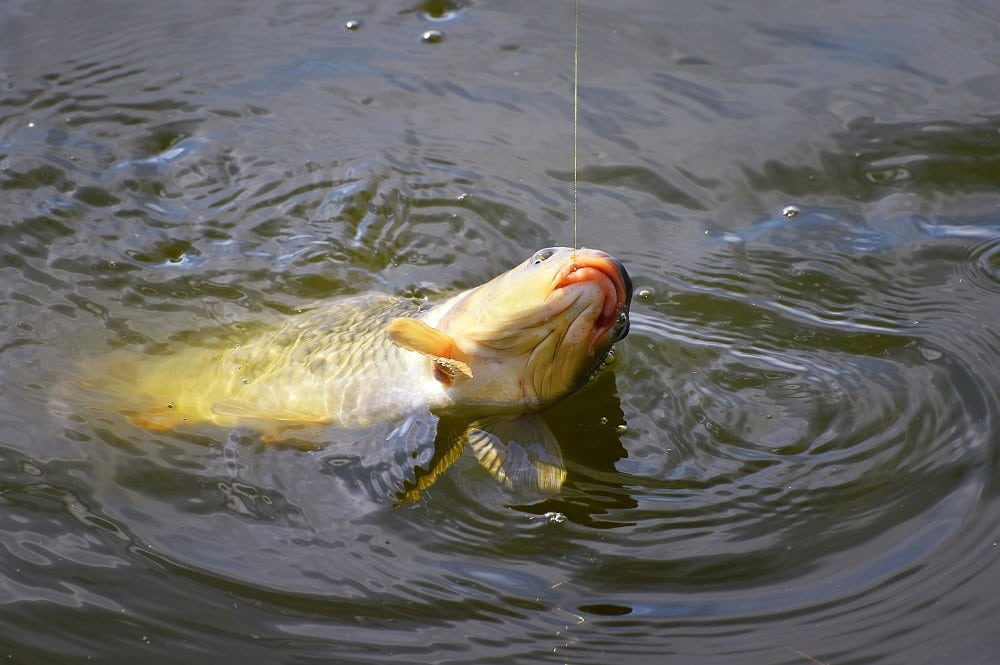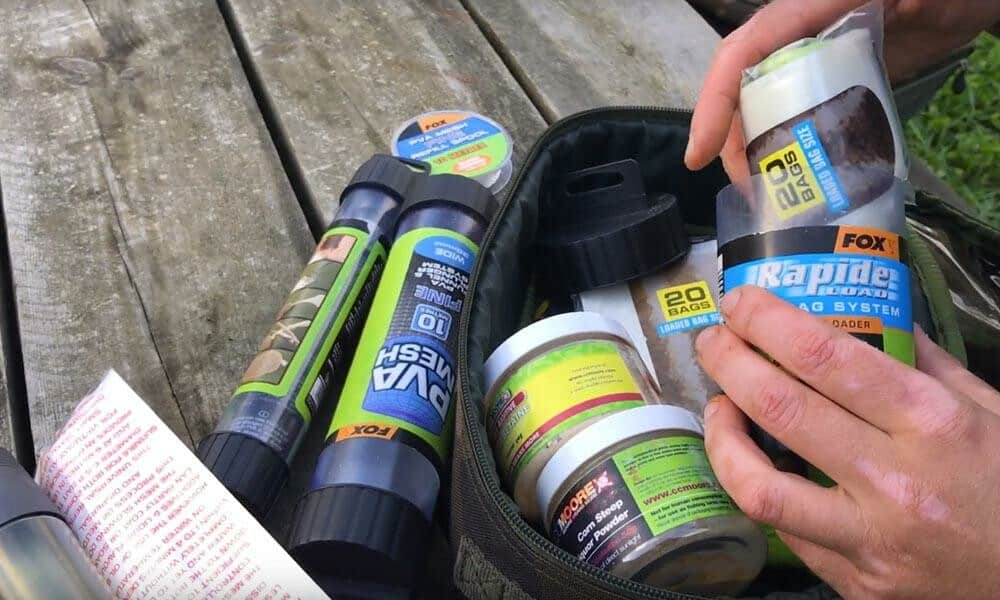Floating
boilies Pop-Up are effective for catching
carp ,
crucian carp ,
carp ,
silver carp ,
grass carp and other white fish all year round. This bait is very light, since it is porous in structure, therefore it does not fall to the bottom, but is located in the water column, raising the hook to the required distance.
General information about popups
Floating boilies are used for fishing in different bodies of water, but most often pop-ups are used as bait:
- in rivers with a relief bottom and strong currents;
- in clogged areas where the tackle can get tangled in algae or drown in silt;
- in closed lakes.
Regardless of the distance between the bottom and the floating bait, the carp will always find it. At the same time, Pop-Up is successfully used for catching trophy specimens
on a feeder . This is fishing using flat feeders
and method. Classic floating boilies are made from bone meal, compound feed, protein supplements and various attractants. These baits are quite popular today, as it is their special flavor that lures large carps. Therefore, any angler must have a huge assortment of pop-ups with different tastes and smells in his arsenal, allowing him to fish in any season. Today, you can see a huge selection of Pop-Up with meat and fish flavors on the shelves, as well as with sweet smells, which are best used for fishing in the summer. In addition to the aroma, the floating balls differ in size, therefore they are selected taking into account the mass of the bait:
- a pop-up with a diameter of 8 mm lifts the hook with a bait weight of 0.15-0.17 g;
- 10 mm in size can raise 0.25-0.27 grams;
- Pop-Up larger than 15 mm holds hooks with a nozzle larger than 0.35 g.
Ingredients for making popups
Pop-Up composition in rare cases differs from the
ingredients of classic boilies .
The difference lies in the final stage: the sinking balls need to be boiled, and the floating ones are dried in the microwave.
The composition of the components is quite diverse. The dough is made from the base component, binder additions, attractants with kneading in plain water or eggs. Bait can include a variety of nutrients or low-calorie supplements that also attract carp.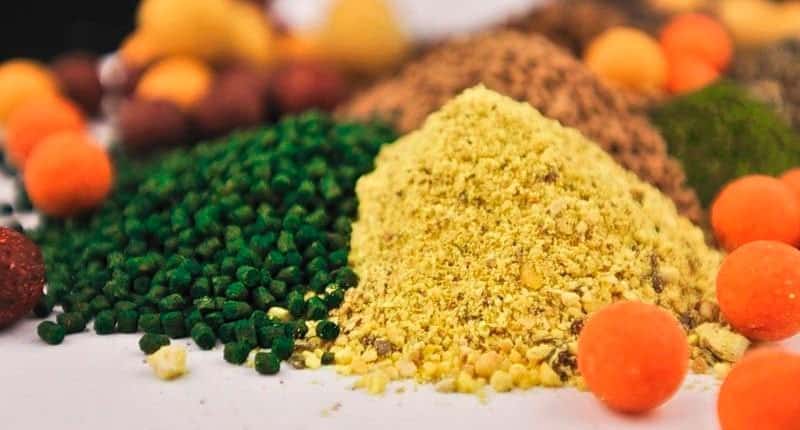
- meat waste;
- bone flour;
- dried milled fish;
- milk.
Vegetable:
- bird feed;
- various cereal flour;
- all kinds of cereals.
The main advantage of boilie is aroma and color. Therefore, in addition to the components described above, it is necessary to add substances that enhance these properties to the dough. Suitable as attractants:
- sunflower oil;
- cocoa;
- cinnamon;
- ground seeds;
- garlic;
- Dill;
- vanilla.
Boilies like meat and fish already have a good smell, but if the ball is made mainly from such tasteless components as cereals and flour, then attractants will be required without fail. Dyes are required in light colors, in which case the ball is easier to see in turbid water.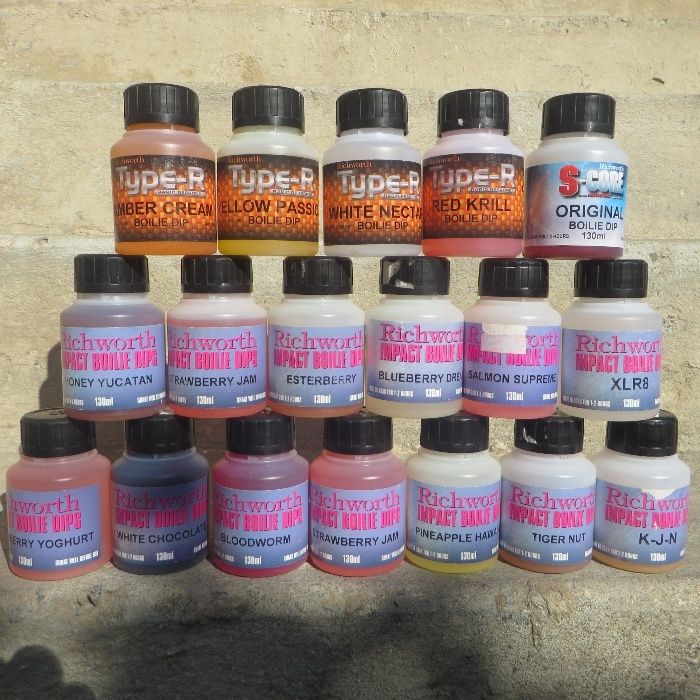
How to make floating boilies at home
The Pop-Up production option is as follows:
- liquid and dry substances are mixed separately, then they are combined;
- kneading is done until smooth;
- the resulting dough is divided into parts;
- all parts are rolled out in the form of a sausage and cut into small pieces;
- balls are made from the resulting pieces and placed on a large plate.
If after they are cooked and dried for 2-3 days, then sinking balls will come out. Several methods are used to impart buoyancy.
Method one
The first is that the cooked balls are dried in a microwave oven at the maximum temperature until the boilies start to burn. Buoyancy is determined by dropping the resulting pop-up into a jar of water. If it sinks or quickly begins to float, it is necessary to change the diameter. When the ball is ready, you just need to choose the right hook so that the latter does not drag the Pop-Up to the bottom and at the same time does not allow it to completely float.
Second way
The second way is to use cork material:
- Grind and pour the cork into the composition as a dry component. In this case, the balls are not dried, but boiled in boiling water.
- Choose a cork ball as the base. Cover it with dough and boil it as well.
- Make a hole in the sinking ball and install the cork insert.
Pop-ups with a cork are characterized by excellent buoyancy, therefore they should not be made large, the diameter should be about 15 mm, otherwise even a heavy nozzle will not hold this boilie near the bottom.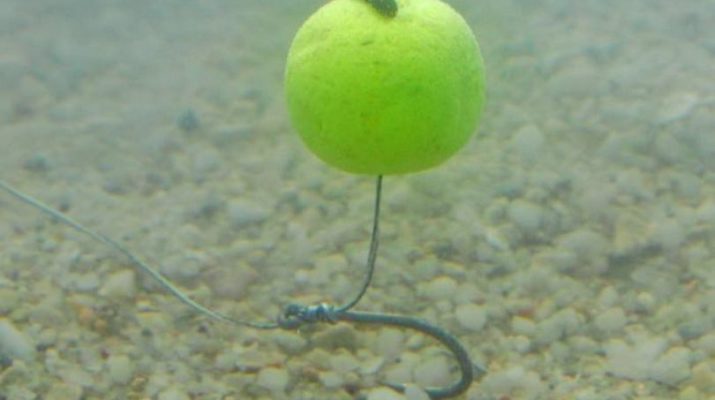
Popular recipes
There are many variations in proportions to which different components are added. Here are some easy ways to make floating boilies.
Corn
Recipe for floating cornmeal boilies:
- soy flour – 250 gr;
- semolina – 300 gr;
- ground peas – 100 gr;
- corn flour – 200 gr;
- ground hemp – 150 gr;
- dry cream – 100 gr;
- dyes and attractants
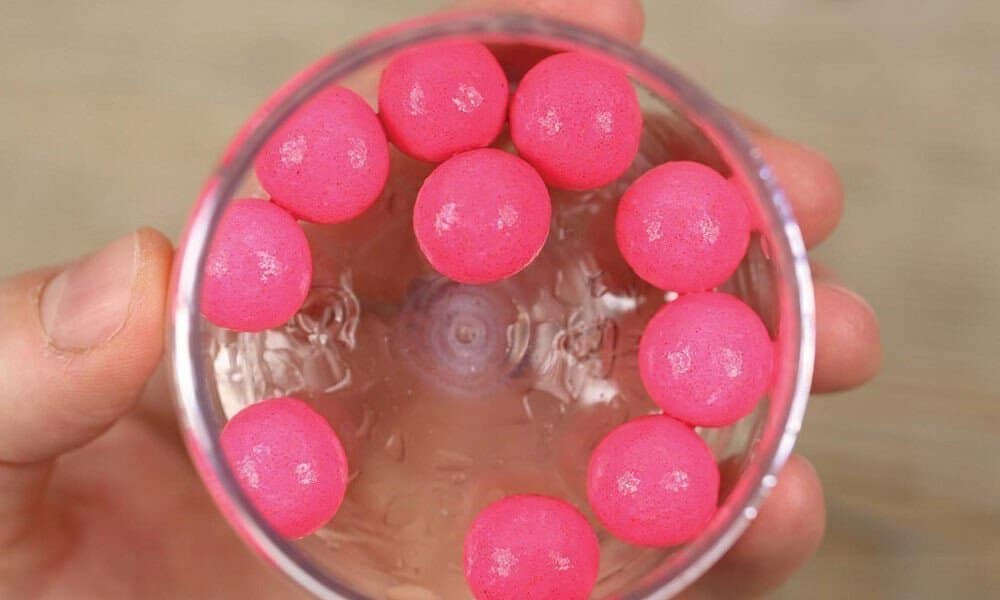
Peanut based recipe
Method number 2:
- soy flour – 350 gr;
- bird feed – 500 gr;
- ground peanuts – 100 gr;
- starch – 100 gr;
- wheat flour – 120 gr;
- attractants.
Soy and Fish Meal Boilies Recipe
Method number 3:
- soy flour – 220 gr;
- ground seeds – 100 gr;
- eggs;
- grains – 150 g;
- fish meal – 420 g.
In the summer, fish bite perfectly on balls based on various flours; with the onset of spring and autumn, it is recommended to include bone meal and other animal supplements in the composition. For winter, when the fish is practically inactive, pop-ups should be made as bright and pungent as possible. How to make your own floating boilies: https://youtu.be/c_LC1hR2RFw
Hair montage for pop-up
When feeding the fish, first touch the food with thick lips. If she feels the sharp sting of the hook, then even the bait that the carp initially liked will make him alert and leave. To trick the prey, a hair montage is used. This is a thin hair, where the bait is fixed on one end, and a hook on the other, so the fish, probing the boilie, will not prick on the sting.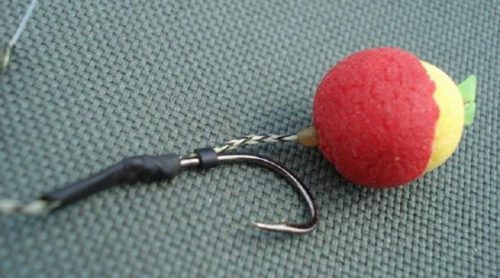
- tie a loop at the end of the braid, in the future it will come in handy for attaching the boilie;
- pass a silicone tube through the braid, then tie a hook;
- the second end of the braid is threaded back into the tube, the size of the hair is adjusted and the end is fixed;
- a hole is made in the bait with a needle, a loop is pulled into it and fastened with a silicone stopper;
- the hair rig is now ready to use and is attached to the main line.
Pros of hair mounting
To begin with, it is very easy to do, while you can do it directly on fishing. Other benefits include:
- Security . This mounting option is considered the most humane for carp, in contrast to the classic one, when the nozzle is on the hook. In the second method, the sting pierces the throat, and after fishing it makes no sense to release the fish. A hook on a hair rig is more likely to catch the fish by the lip, which is safer.
- Reliability . The chance that the fish will swallow the hook at the same time as the bait is quite high. It rises based on how close the hook is to the bait, however, make the hair short and you don’t need to move it very close. Carp can feel the edge and walk away.
As is clear, making your own pop-up and hair accessories based on them is completely easy. In fishing shops you can see a variety of boilies for all fishing conditions. They are likely to perform better than scooters, however they are much more expensive in terms of cost. Therefore, in order not to overpay money, fishermen often make different baits with their own hands, and pop-up boilies are no exception. Well, fishermen, who have the opportunity to purchase ready-made baits, will not engage in boilies themselves.
